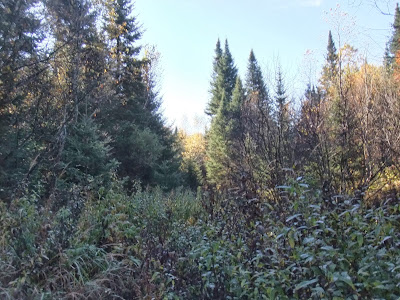It’s
a new season, and with still so many questions to answer. The spring and summer
have been wet, not with an abundance of rain but frequent. How did the broods
survive?
 |
| Young of the year and still rather dumb. |
We
went up to grouse country the beginning of September, having missed our usual
summer visits. The dogs found a grouse here and there, and then the last day
before we left they hit pay dirt, busting a covey of maybe a dozen. That wasn’t enough evidence though to form a
solid opinion.
On
October first, a rather warm opening day, we found a scattering of grouse,
maybe eight or ten, all skittish as the devil, each of them disappearing into
the bright autumn foliage in the blink of an eye. One lone woodcock offered the
only shot fired, and that was a miss that I still can’t believe. Yet I still
didn’t dare announce an opinion on how the season would be.
Last
season seemed to be the best of my lifetime, yet come wintertime, when I
tallied up all the numbers and compared them to previous years, it wasn’t all
that different. If you added in woodcock the numbers were impressive, but
grouse alone was only slightly better than average.
The
reports from upcountry are good, not spectacular, but good. We’ll have to wait
and see. By the time we get back up there the leaves will be off and the dogs
are ready.
So
I may be able to invite friends over for a grouse dinner, but I’m not sure yet
just how many.
 |
| Grouse country |



